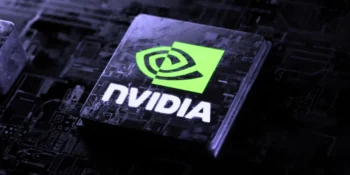Supply chain attacks have emerged as a significant cybersecurity threat, posing risks to businesses, governments, and individuals. This in-depth analysis explores the significance of supply chain attacks, their impact on cybersecurity, common tactics employed, challenges in detection and prevention, and the imperative need for robust security measures to safeguard the interconnected web of global supply chains.
Significance of Supply Chain Attacks
Supply chain attacks hold immense significance due to several key factors:
- Widespread Impact: Compromising a single entity within a supply chain can have cascading effects, impacting multiple organizations and their stakeholders.
- Targeting Critical Infrastructure: Cybercriminals often target supply chains associated with critical infrastructure, including energy, healthcare, and finance, magnifying the potential consequences.
- Economic Ramifications: The economic fallout from supply chain attacks can be substantial, affecting production, disrupting services, and resulting in significant financial losses.
Tactics Employed in Supply Chain Attacks
Understanding the tactics employed is crucial in addressing supply chain attacks:
- Software Supply Chain Exploitation: Cybercriminals infiltrate software development or distribution processes to introduce malicious code into legitimate applications.
- Hardware Compromises: Malicious actors may compromise the manufacturing or distribution of hardware components, leading to the dissemination of compromised devices.
- Third-Party Vendor Exploitation: Attackers exploit vulnerabilities in third-party vendors connected to the supply chain, using them as entry points for broader attacks.
Impact on Cybersecurity
Supply chain attacks have a profound impact on cybersecurity:
- Data Breaches: Compromised supply chains can result in data breaches, exposing sensitive customer data, intellectual property, and trade secrets.
- Ransomware Incidents: Attackers may deploy ransomware through the supply chain, encrypting critical data and demanding payment for its release.
- Reputation Damage: Organizations suffering from supply chain attacks often experience reputational damage, eroding customer trust and confidence.
Challenges in Detection and Prevention
Detecting and preventing supply chain attacks present significant challenges:
- Complexity of Supply Chains: Globalized and interconnected supply chains are intricate, making it challenging to monitor and secure every component.
- Limited Visibility: Organizations often lack visibility into the security practices of every entity within their supply chain, leaving potential vulnerabilities unaddressed.
- Sophisticated Tactics: Attackers employ sophisticated tactics, including zero-day exploits and advanced persistent threats, which make detection more challenging.
Strategies for Mitigating Supply Chain Risks
Mitigating supply chain risks requires a multi-faceted approach:
- Vendor Risk Management: Implementing robust vendor risk management programs to assess and monitor the cybersecurity posture of third-party vendors.
- Continuous Monitoring: Continuous monitoring tools and threat intelligence are employed to detect and respond to suspicious activities within the supply chain.
- Incident Response Planning: Developing and regularly testing incident response plans to ensure a swift and effective response during a supply chain attack.
Collaborative Efforts and Industry Standards
Collaboration and adherence to industry standards are critical in securing the supply chain:
- Information Sharing: Organizations should share threat intelligence and best practices to strengthen collective defenses against evolving threats.
- Compliance Standards: Adhering to cybersecurity standards and regulations within specific industries helps establish a baseline for securing the supply chain.
- Supply Chain Resilience Planning: Develop resilience plans that include contingency measures for supply chain disruptions and cyber incidents.
The Future of Supply Chain Security
Ongoing efforts and emerging trends shape the future of supply chain security:
- Blockchain Technology: The adoption of blockchain for enhanced traceability and transparency within supply chains to mitigate tampering risks.
- AI and Machine Learning: Integration of artificial intelligence and machine learning for advanced threat detection and predictive analytics in supply chain security.
- Government Involvement: Increased government involvement and regulation to enforce cybersecurity measures and standards within supply chains.
Conclusion
Supply chain attacks represent a formidable challenge in an era of globalized commerce and interconnected digital systems. As organizations grapple with the evolving landscape of cyber threats, prioritizing supply chain security becomes imperative. Through collaborative efforts, technological innovations, and stringent security measures, we can fortify the links in our supply chains, ensuring the resilience and integrity of the systems that underpin our modern economies and societies.










